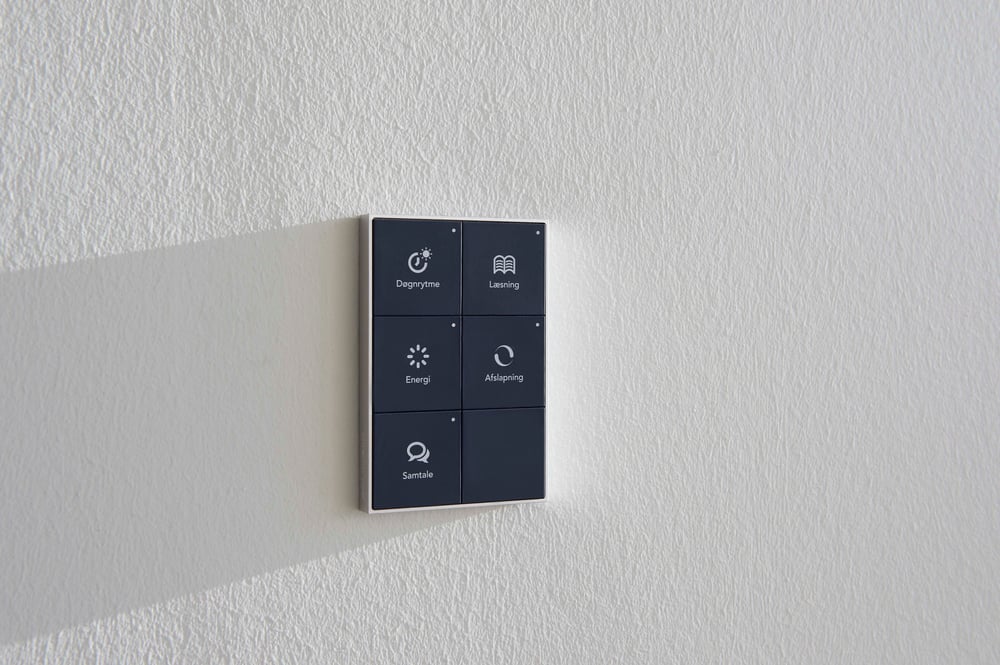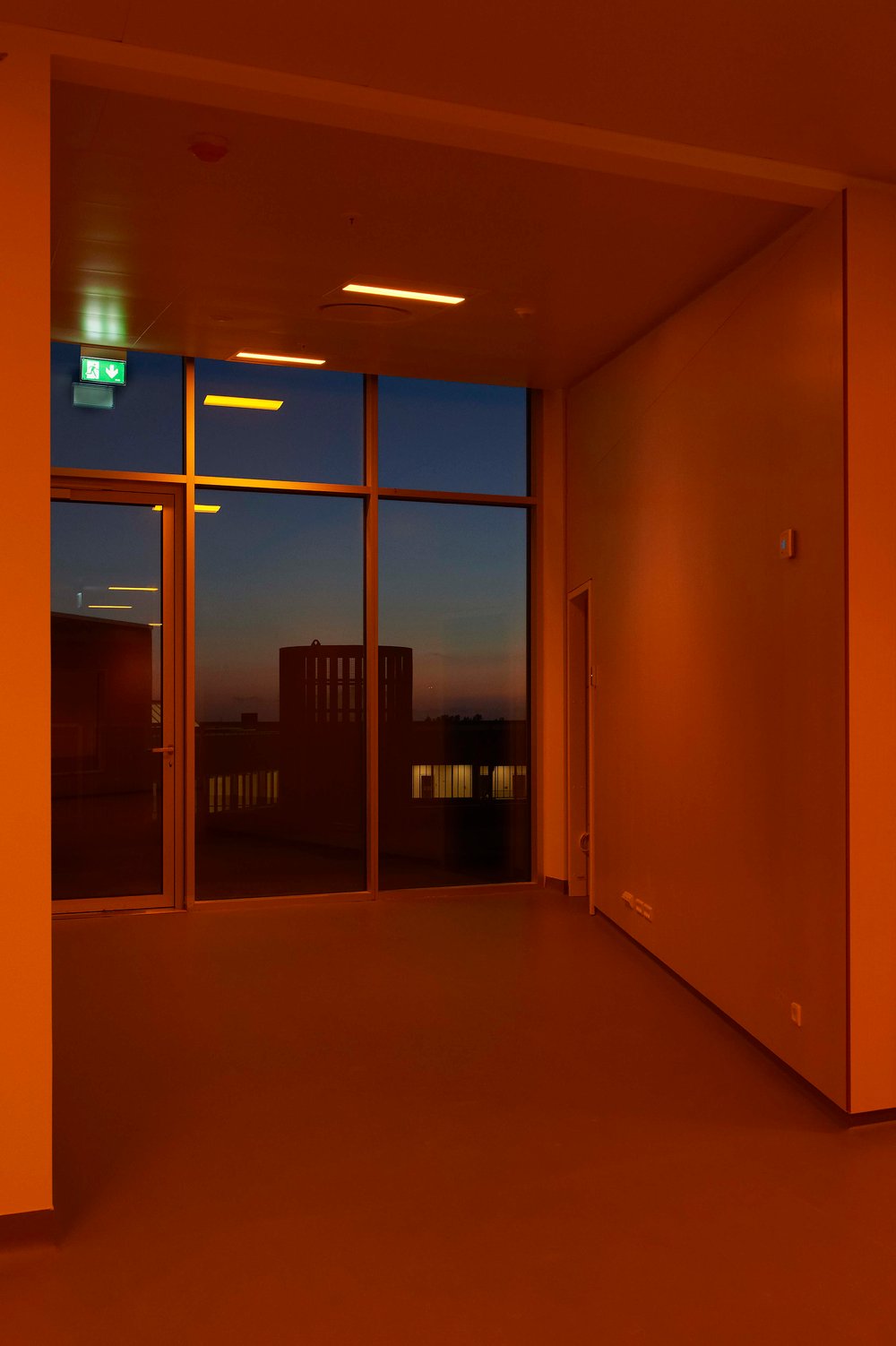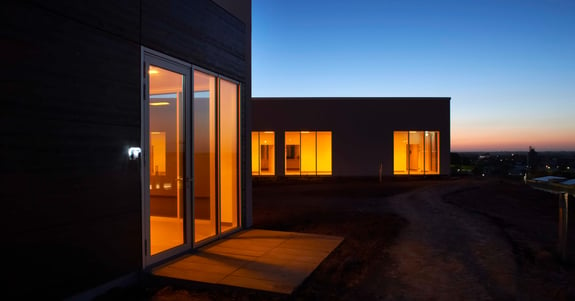When Aabenraa Hospital opens its newly built psychiatric department in September, it will introduce a revolutionary lighting concept: Ergonomic Circadian Lighting from Chromaviso.
Region Syddanmark has taken a new approach to lighting with the construction of the psychiatric hospital. They have chosen Ergonomic Circadian Lighting from Chromaviso, an advancement of dynamic lighting, that supports the body's natural circadian rhythm and provides the right lighting for different functions within the facility.
— The Ergonomic Circadian Lighting will become an integral part of the building, and when you step onto the premises, you can clearly feel its effect, explains Peter Houd from White Arkitekter, the architects behind the project.
The new psychiatric hospital consists of eight units with a total of 115 beds and shared facilities. This makes the installation of Ergonomic Circadian Lighting the largest in psychiatry to date.

Lightning-fast response time
The integration of the Ergonomic Circadian Lighting into the overall electrical project was a complex task, according to Søren Busch Madsen, project manager at Wicotec Kirkebjerg, the electrical contractor responsible for the project.
— This project was extremely large and challenging, and it was the first time we had undertaken such a large integration between our KNX system and the lighting's DMX system. However, it exceeded our expectations, and Chromaviso has successfully completed the delivery on time and without any issues, explained Søren Busch Madsen.
The successful completion of the integration can be measured by the lightning-fast response time. One of the initial requirements from the client was for the speed to be high - from the moment the button is pressed to when the light responds. Both Søren Busch Madsen and the consulting engineers from Norconsult/Wessberg were well aware of this requirement.
— We often come across cases where it takes too long for the lights to change. Today, this is one of the things that I am most proud of in the Aabenraa project. The response time is very short - 3/10 of a second or 'while pressing the button.' This is crucial in emergency situations where immediate full brightness is needed, Søren Busch Madsen explained.
Energy-efficient solution
Ergonomic Circadian Lighting is an energy-efficient solution that takes power consumption over a 24-hour period into account. On average, the lighting system uses 1.8 W/m2 in large corridors and communal areas when the lights are constantly on. Additionally, motion sensors and daylight sensors are utilized to further reduce energy consumption.
During the day, the lighting is brighter than usual to simulate natural daylight and achieve a physiological effect. However, during the night, it transitions to a specially developed dimmed light that uses significantly less energy compared to conventional installations. The combination of energy optimization and circadian lighting is groundbreaking, requiring a deep understanding of control systems and how light affects people, as explained by Torben Skov Hansen, Innovation Manager at Chromaviso.
The dimmed night light includes all colours except those that primarily affect the body's wakefulness at night. This ensures that the staff has good visual conditions without disturbing the patients' circadian rhythm and sleep quality.
The lighting system incorporates the latest LED technologies with energy-efficient light sources, providing around 110 lumens per watt for the entire fixture and a minimum of 150 lumens per watt for the diodes.
User-friendliness and safety
The lighting control includes both central touch screens in the staff room and push panels in the rooms.

— I'm thrilled with the panels. In the past, it was just on or off. Then came the dimmers, and it almost required an engineering degree to turn on the lights. With these panels, the lighting becomes user-friendly. It surprises me that no one has made something like this before – it's incredibly easy to use, has a great design, and is well-executed, explains architect Peter Houd.
The panels are the result of many years of experience in creating flexible and user-friendly solutions, says Torben Skov Hansen:
— We have focused on creating control panels that cater to different needs. The staff should have an overview of all the rooms and be able to adjust the lighting according to the treatment, mood, or activity they want to support. We have worked with colours, icons, and words to develop user-friendly and more homely push-button panels that are placed in small lounges and activity rooms, where they can be operated by both staff and patients.
Reliable Solution
Due to the nature of being a psychiatric hospital, there were several special considerations that the installation had to adhere to.
— It was crucial that the fixtures were vandal-proof, preventing them from being smashed or used as weapons, and ensuring the safety of both patients and staff. Chromaviso found a cost-effective solution that met these requirements. They approached the challenges with professionalism, addressing them immediately and finding timely resolutions, explained Søren Busch Madsen. He pointed out that both parties had a proactive approach from the beginning, staying one step ahead of the project and its schedule.
— We encountered very few errors along the way, thanks to the use of tested and documented components. The system functions reliably today, and I expect it to remain highly dependable in the future, said Søren Busch Madsen confidently.
Next Step: User Training
With the lighting now in place, the project is entering a new phase focused on educating the users on how to utilize the lighting system leading up to the September opening.
— It's looking great, and I believe it will be a facility we can be proud of and receive recognition for. Now, it's important that the project is followed through to ensure the settings are right for the users. Chromaviso is responsible for this, and they have a plan, explains Hans Peter Smidt, consulting engineer from Norconsult/Wessberg, who is overseeing the project's implementation.

— It is crucial for users to understand the beneficial effects of Ergonomic Circadian Lighting and how the different light settings function. Additionally, we engage in dialogue with the users to make the final adjustments according to their needs. This is an exciting process that not only enhances the solution but also provides us with valuable knowledge for our continuous development, supplemented Torben Skov Hansen.
Facts
About Ergonomic Circadian Lighting
Ergonomic Circadian Lighting is dynamic lighting that supports the natural circadian rhythm and can be tailored to specific work situations. The lighting is developed by Chromaviso, a leading provider of intelligent lighting concepts for the healthcare sector with over 700 installations in Northern Europe. Ergonomic Circadian Lighting concepts are now recommended by doctors, nurses, and researchers.
Ergonomic Circadian Lighting is also involved in several research projects at institutions such as Aarhus University Hospital and Glostrup Hospital. These projects examine the effects of Chromaviso's lighting on patients and staff. The project is supported by the Market Maturation Fund.
About the architecture
The main focus of the architecture at Aabenraa's psychiatric hospital is to harmonize the building with the surrounding nature. White Arkitekter has emphasized light, colours, and natural materials, as studies show that these factors make a difference in patients' daily lives and can help reduce the use of medication.

